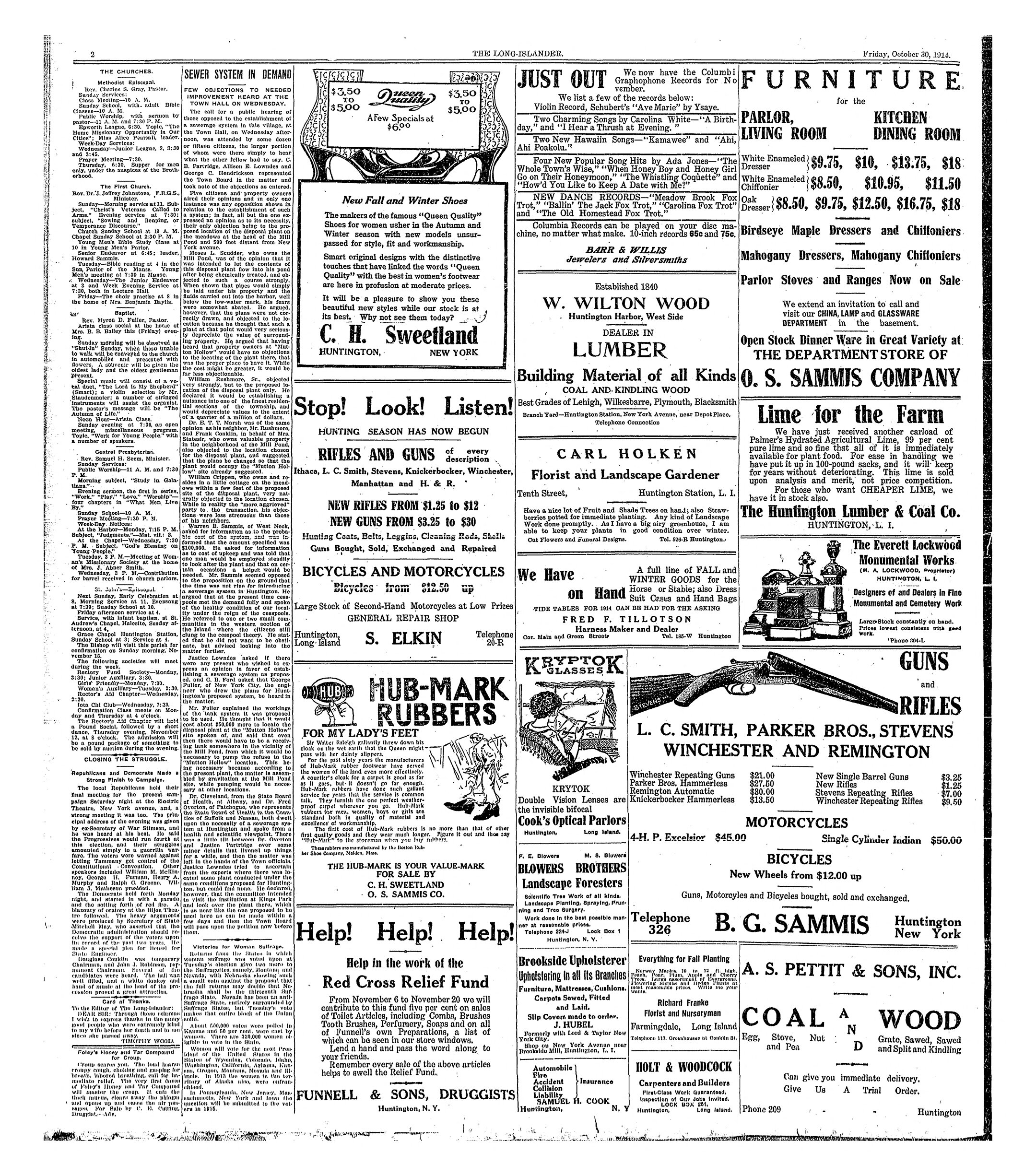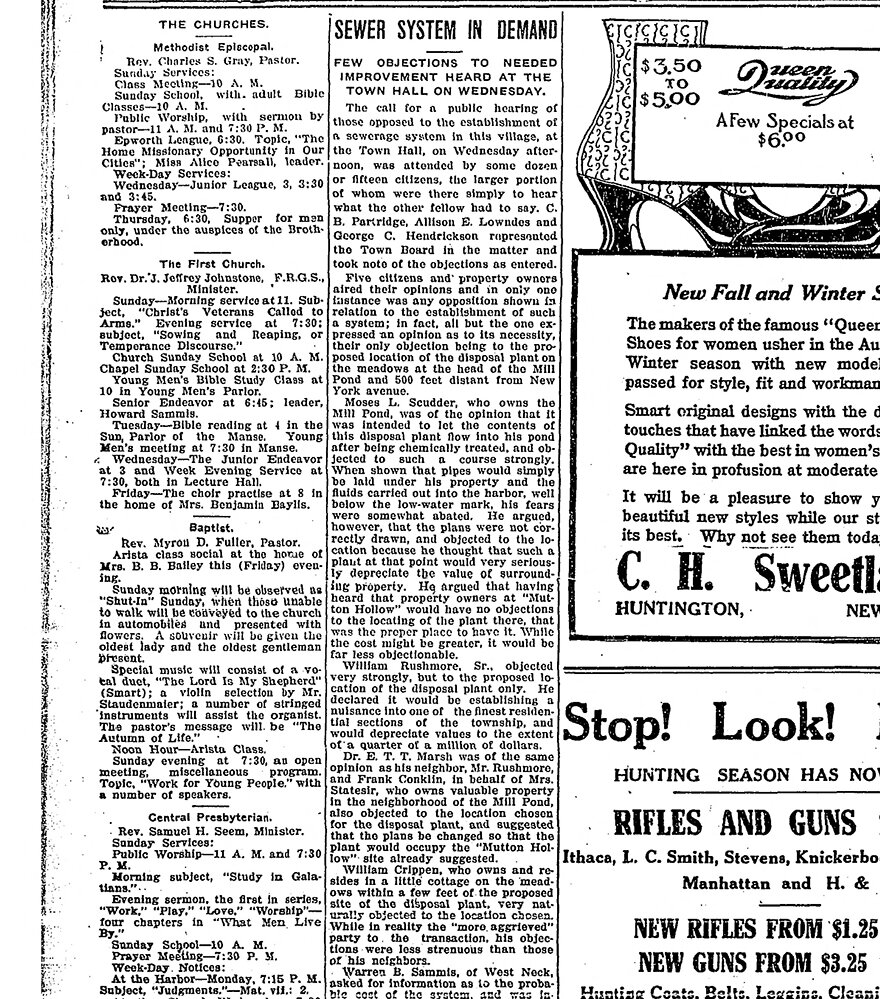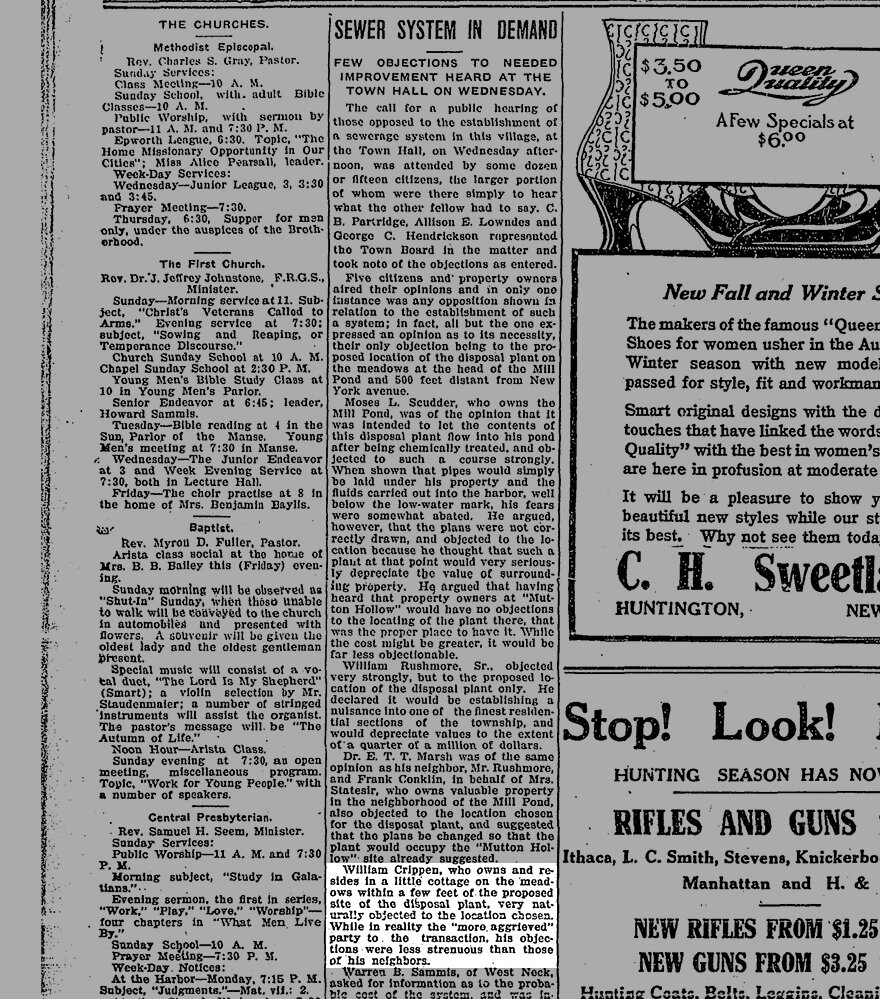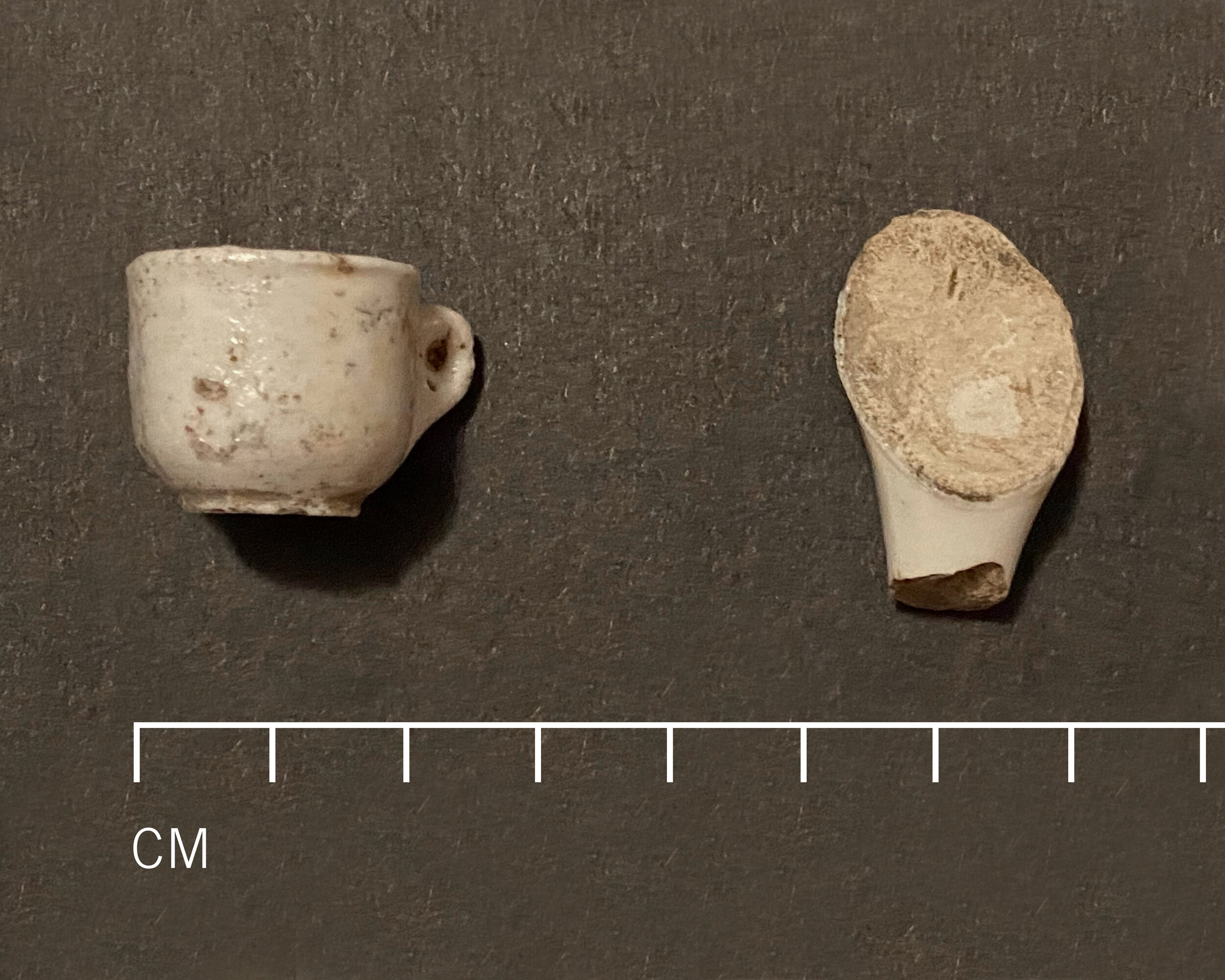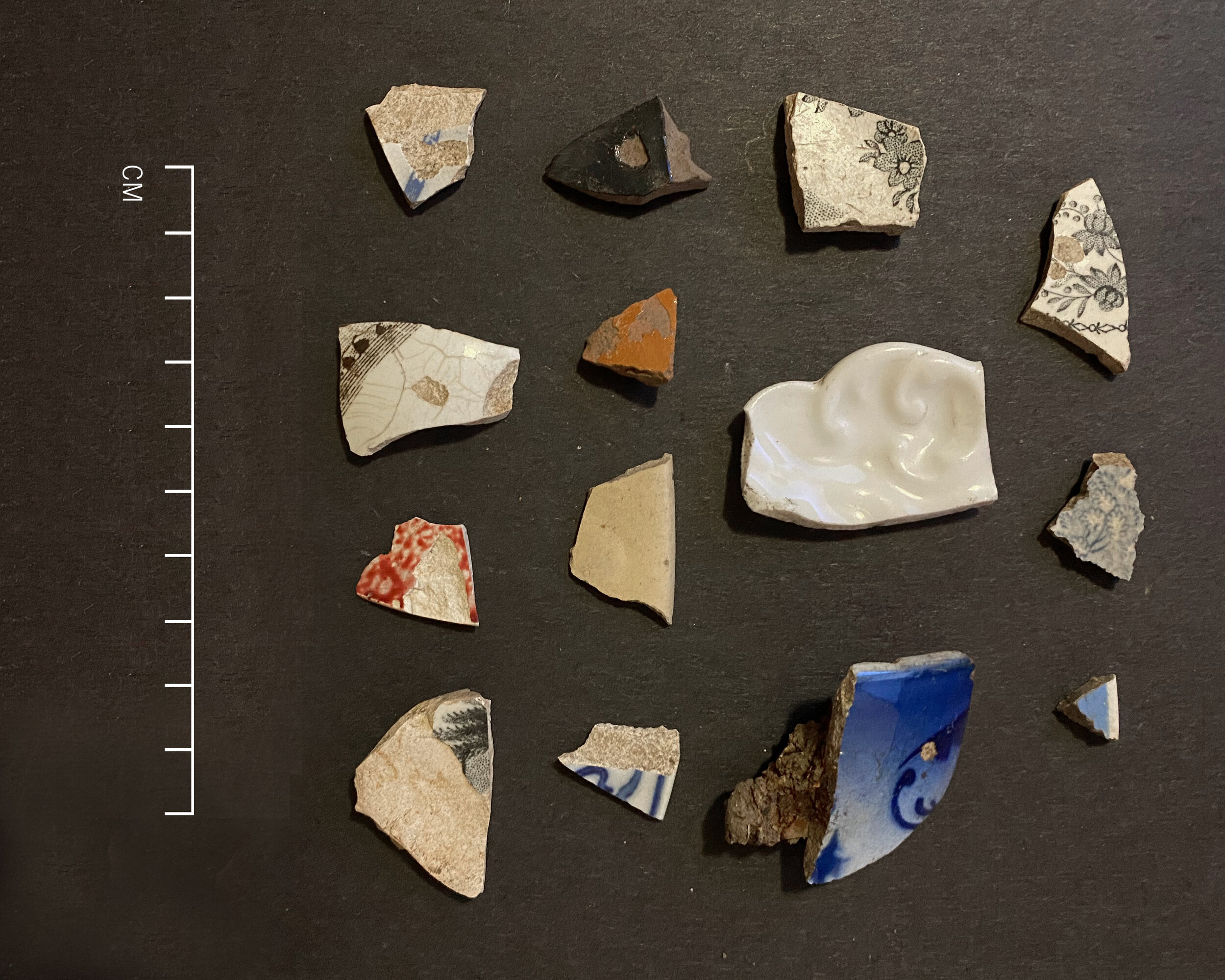Long Island Dirt: Huntington: The Crippen House
Long Island Dirt:
Recovering our Buried Past
by Allison McGovern
huntington:
the CRIPPEN HOUSE
Peter Crippen was not the first person to inhabit the house on Creek Road in Huntington. Historical and archaeological research at the Peter Crippen house site are directed at revealing information about temporal and lived experience at the site.
Crippen house today. Courtesy of Allison McGovern
Crossman account books, c.1836–1838. Courtesy of Huntington Historical Society
Peter Crippen was one of many southern freed people of color who sought work in New York in the nineteenth century. Interestingly, his arrival pre-dates the Great Migration by nearly 75 years. Peter Crippen was born on Quaker Thomas Crippen’s Gargatha plantation in Accomack County, Virginia in 1809. Questions abound among local historians as to his status as a freed man or a captive prior to 1818, when Thomas Crippen’s daughter Sarah inherited the plantation from her father and filed a deed of manumission for Peter and his father. Peter Crippen’s father died in the late 1820s. Not long after that, Gilbert Crossman, an owner of the Crossman brickyards in Lloyd Harbor, sent word to Accomack County, Virginia that workers were sought for his Lloyd Harbor brickworks. Peter Crippen travelled north in response to that call for workers. The Crossman account books from 1836–1838 indicate that Crippen earned $12 a month working for Crossman. Crippen rarely made purchases against his wages (once in 1837 he purchased potatoes and turnips, and once in 1838 he purchased beef), and he occasionally earned additional money by loading a sloop or tending the kiln.
When Peter Crippen arrived in New York, he made connections with long-standing families and communities of color in Cold Spring Harbor and Huntington, as well as white business owners, farm owners, landowners, and laborers. Archival data provide some clues to his settlement strategies prior to purchasing the property at Creek Road. However, there is a great deal of inconsistency in the reporting of Peter Crippen’s family over time, and additional genealogical research is necessary to develop a more complete understanding of his experiences and his kin. Due to the biases of census takers, we cannot assume that all of the information recorded about residents in the censuses is accurate; the same argument can be made for newspaper mentions and announcements, which may have been written about Crippen and his family without their input. Names, ages, and racial or ethnic classifications may be inaccurate; it might also be the case that people within households might report their names and ages variably over time. With these critical conditions in mind, some interesting points can be made about Peter Crippen’s movement to and settlement on Long Island.
Huntington School District Census Data, complied from the archives of the Huntington Historical Society. Courtesy of Allison McGovern
Around 1840, Crippen appeared to have been living near Cold Spring Harbor with other people of color, including William Jarvis and Sydney Gardner, all of whom had children enrolled in the Cold Spring Harbor school district. The 1850 Federal Census is the first census to list Peter Crippen (spelled Cripid) as a head of household. At that time, he was identified as 30 years old and his household included his wife Clarissa (28 yrs), daughter Harriet L. (10 yrs), son Will H. (8yrs), and daughter Sarah A. (4 yrs). The names of surrounding households, as well as the School Census data, suggest that the Crippen household was in Cold Spring.
By the time of the 1860 census, there are many changes to Peter Crippen’s household description. At that time, he is likely living at the Creek Road site. The 1860 census places Peter Cripen and Nelson Smith as neighbors, and by this time Nelson Smith is a property owner at Creek Road. It was in 1854 that Nelson Smith purchased property on Creek Road measuring “thirty five feet in width in front on said street and thirty two on the rear end and extending seventy feet in depth back from said street or highway” from Elbert and Elizabeth Walters for $50 in 1854 (Suffolk County Deed Liber 78:513). In fact, there are three households comprised solely of people of color listed consecutively in 1860: Nelson Smith, Peter Crippen, and George Smith. Peter Cripen is listed as a 45-year-old fisherman who was born in Virginia. His household was comprised of Harriet Cripen (33 yrs); Lucyette Cripen (16 yrs); Samuel Cripen (9 yrs); James Cripen (3 yrs); and Clarissa Mills (66 yrs). In 1861, Peter Crippen had two children enrolled in School District #3.
Peter Crippen purchased the Creek Road property in 1864 from Elbert and Eliza Walters for $275 (Suffolk County Deed Liber 128:564), though he appears to have been living there in 1860 (possibly as a renter). According to a Draft Crippen House Chain of Title provided by the Town Historian, the Crippen property and the Nelson property were part of a three-acre parcel that Elbert Walters purchased from Smith Johnson, Henry Johnson, and Margaret Johnson in 1835.
1873 Beers Atlas of Long Island. Courtesy of Wkimedia Commons
Hyde Atlas of a part of Suffolk County. Courtesy of New York Public Library online collections
Peter Crippen and Nelson Smith were among the seven founders and trustees of the African Methodist Ebenezer Church (currently the Bethel African Methodist Episcopal Church), which was founded in Huntington in 1843. Their homes on Creek Road were located approximately half a mile from the church. Shortly after its founding the church had one of the largest AME congregations in Suffolk County, and it played an important role in religious, social, and civic functions for the community of color.
Peter Crippen died on February 6, 1875. After his death, his descendants continued to live at the site. In 1880, the Crippen household was comprised of William Crippen (35 years), his wife Lydia (38 years) and their daughter Mary (8 years old). Also, in 1880, the younger William Crippen (13 years old) was listed as a farm laborer in the home of Keturah Roe and his daughter Martha Scudder. By this time, Nelson Smith might have settled elsewhere in the Town.
By 1900, William Crippen is listed as a widowed, 56-year-old day laborer living with his daughter Mary and her husband Samuel J. Smith. Their household expanded by 1910 to include (in addition to William Crippen and Mary and Samuel Smith) Mary’s daughter Coraline M. Carman (22), Coraline’s husband Charles (22), their sons William H. Carman (2) and Charles A. Carman (9 mos), Mary and Samuel’s son William F. (21) and daughter Lillian E. (16). Then in 1916, William Crippen married Mary de Silva Erwin.
The Crippen and Carman families continued to live at the Creek Road site into the early 21st century. During their residency they witness significant changes to the landscape around them. In 1914, plans for a town sewer system were underway and a news article in The Long Islander covered public response to the plan at a town meeting. William Crippen spoke out as one of four people opposed to the proposed location of the sewage plant on the meadows at the head of the Mill Pond. The article notes that William Crippen, “who owns and resides in a little cottage on the meadows within a few feet of the proposed site of the disposal plant, very naturally objected to the location chosen.” William died in 1918.
The Carmens faced additional environmental challenges at the Creek Road residence into the mid and late twentieth century. The sewage treatment plant expanded all around the Crippen property for several decades, causing depreciation of value and no doubt impacting their health. The filling of the Mill Dam to create Mill Dam Park between 1944 and 1951, followed by road improvements to Creek Road over time, led to increased flooding throughout the property. These conditions also have implications for the archaeological potential of the site.
Aerial view of the Crippen House site next to the sewage treatment plant. Courtesy of Huntington Historical Society
Archaeological investigations at the site were intended to identify if any archaeological traces from Crippen and Carmen family occupation were preserved at the site.
The results of the archaeological survey indicate that historic artifacts are distributed across the site in buried deposits, and an historic sheet midden (i.e., a horizontal distribution of refuse across the buried ground surface) was identified as intact in at least one portion of the site. The artifacts recovered from within the sheet midden demonstrate a diverse assemblage of historic nineteenth century ceramics, in addition to fragments of glass, metal, coal, slag, bone, and shell, that are remnants of the daily patterns of lived experience distributed across the site.
Archaeological research at the site is ongoing, and the town plans to incorporate the oldest part of the house and the artifacts into a future museum of African American History in the Town of Huntington.





